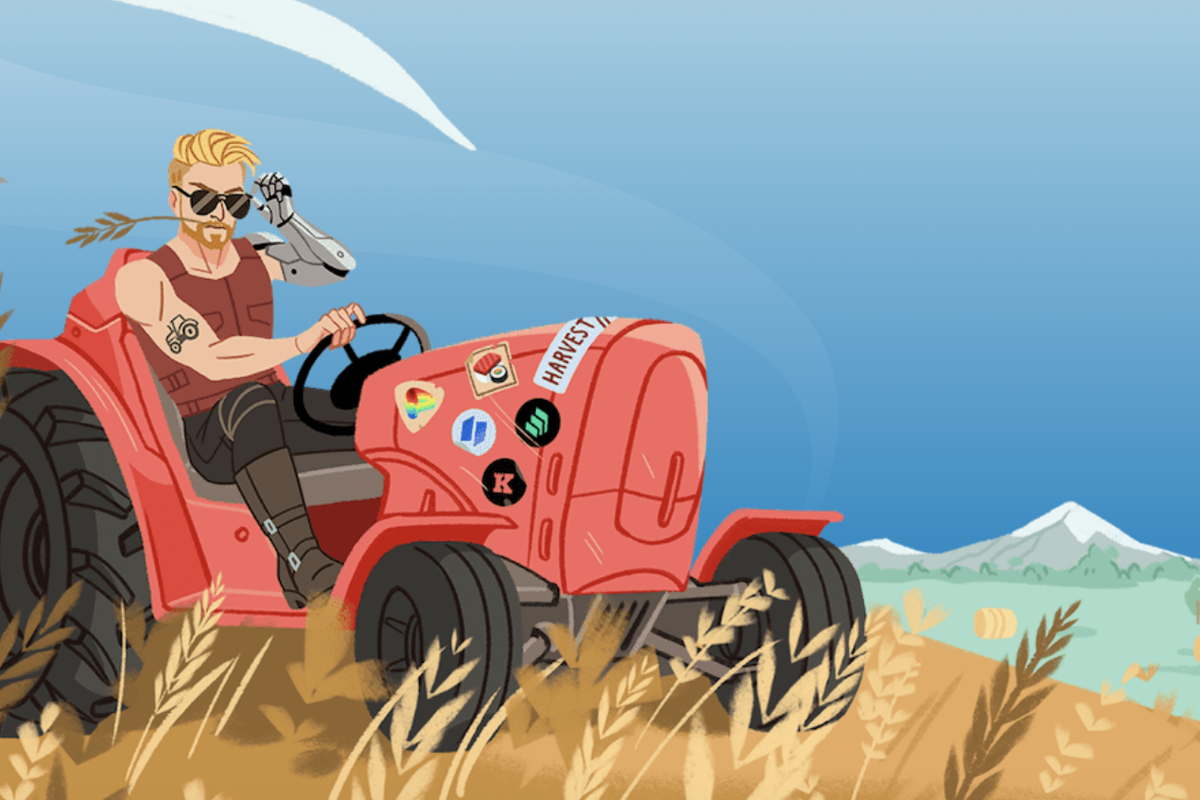[ad_1]
An ongoing dilemma of poor user experience has slowed growth and adoption in the Web3 ecosystem. In a recent talk with one of Harvest Finance’s community leaders, “Red,” a better understanding of the UX bottleneck was provided.
While there are numerous advantages that the decentralized web provides, the ease of use has not yet caught up to the Web2 user experience. Red, who has played a pivotal role in growing the Harvest Finance community, gave a high-level overview of the issues he and the team are tackling.
“Essentially one of the big deficiencies in DeFi is UX, the customer experience. It can be very difficult, some are very convoluted, you know, having to move your money from Coinbase Global Inc COIN to Metamask and then connect to this website, do approvals and deposits,” Red said.
“There are just way too many steps and it’s confusing. Your Aunt Matilda is never going to be able to figure this out. At Harvest, we’re trying to be very conscientious about that.”
Harvest Finance is undergoing several updates to continue to improve its user experience, all in hopes of reducing friction for the average user as well as protect users’ safety.
“Harvest Finance is a yield farming aggregator. So there may be hundreds of different opportunities that users can go to deposit assets within the crypto ecosystem and earn a rate of return,” said Red.
“But one of the most difficult things in crypto is trying not to get scammed, right? There are just so many various things they can offer, you know, a bunch of money. And ultimately, those projects will not be very good.”
Red added: “Farming takes a couple of steps to compound your returns and earn an APY versus an APR. So Harvest essentially automates that whole process. There’s automated compounding, so if you deposit Ethereum ETH/USD, you may be farming some random token, but the Harvest mechanism sells that random token for more Ethereum and compounds your balance. So we’re continuously growing, earning at, you know, 10 to 100 times greater a rate of return than like a traditional big bank offering.”
Red went on to share the long-term goals for Harvest Finance and how it is acting now to make these goals possible. An important element was Harvest Finance’s ongoing relationship with APWine.
“We’re really working on a redesigned UX — it’s pretty basic right now. Going forward, we want it to feel like you’re on a Robinhood-like app where you have so much information and graphs in front of you telling you what you made year-to-date and then working with protocols like SimpleFi. You read all this information that’s on-chain and then extrapolate with graphs and make it way more meaningful,” said Red.
“I’m working with APWine finance which actually allows you to take a three-month cash advance on your yield. And then through that process, creates a global marketplace for yield, so instead of having to visit Harvest or Aave, you can go to APWine finance and have a unified experience.”
Red explained his role with Harvest Finance was primarily a non-technical one. His focus gravitates around business development, customer service and marketing. His ability to gain such a prominent position in the community without building the protocol is very interesting and likely a point of inspiration in his ambitions in making a simpler Web3 user experience.
When asked about non-technical roles in Web3, Red provided an excellent answer: “It’s a great question. It’s actually something I’m super passionate about. People in the crypto space tend to think just about developers only, or when you think about a DAO, a decentralized autonomous organization, they only talk about voting.
“But when you talk about a decentralized autonomous organization that’s an entire business, right? And you can’t run a business just based on voting. What you need to do is bring community members that have the skillsets in HR, risk analysis, and more.”
Red added that 90% of the ecosystem is non-developer.
“Satoshi walked away from Bitcoin. Who’s running Bitcoin now? Community. Right. So that shows you how important it really is. We need to break away from this idea. It’s not just developers. We need skill sets across the board,” Red noted.
The impact of a community cannot be understated, as user experience continues to improve across Web3, we can expect more non-technical roles in the industry. Getting involved now could pay off years down the road.
[ad_2]
Image and article originally from www.benzinga.com. Read the original article here.

